Editorial
Our journal statistics for 2021
In this editorial, we share some of the journal’s key statistics for 2021, including acceptance rate, processing and publication times, and other useful data.

In 2021, we received 109 submissions in total, which included 85 research articles, 18 commentaries, and 6 research notes. Although somewhat lower than our 2020 submission volume, this number is still impressive and a testament to the productiveness of the field even in the face of all the complexities and disruptions caused by the worldwide pandemic. It wasn’t just authors who labored intensely and tirelessly, however. Our editors, interns, and staff labored mightily to both maintain our standards and notify authors of our decisions expeditiously. I want to call out, in particular, our Managing Editor, Dr. Viktoria Gabriel, who wears more hats that one can count, and who maintained a tight peer review and production schedule despite delays and disruptions, as well as our Copy Editor, Dr. Michelle Gaston, for her hawk eyes and exceptional editorial skill.
We are heavily indebted to the unsung heroes of the HKS Misinformation Review, the 150+ referees who offered their time and expertise to inform our decisions and help authors improve their papers. These referees not only provided careful critiques but did so in an average of 7 days during a global pandemic. There is many an author whose work has been improved by being challenged to be more analytical in their writing (and sometimes data analysis), as well as being pointed to new literature in the field. Readers will also thank referees for requesting more detail or demanding greater clarity in writing. So a huge thank you goes out to all the referees that have supported the journal in 2021.
I would also like to acknowledge the work of our student interns who supported editorial production, outreach efforts, and internal information management in 2021. Our internship program supports young and mature students with an interest in scholarly publishing to develop their understanding of mis- and disinformation issues, nurture their editorial and research skills, and benefit from engagement with real-life matters related to OA and journal development. Our interns joined us from a range of US higher-ed institutions, including The University of Denver, The University of Washington, and San Jose State University, and contributed over 300 hours to the HKS Misinformation Review. We are grateful for their curiosity, their enthusiasm, and their support for our vision and mission.
Finally, our greatest expression of gratitude is to the authors who have chosen the HKS Misinformation Review as a means of disseminating their research. Thanks to all of you.
In what follows, we share some of the journal’s key statistics for 2021.
Acceptance rate
Our acceptance rate in 2021 was 34% (see Figure 1). Of the papers received last year only 0% were accepted after initial review, 21% were accepted after a first revision, and 13% after a 2nd or 3rd revision. We particularly appreciate the patience and persistence of reviewers who were often asked to review one or more manuscript revisions.
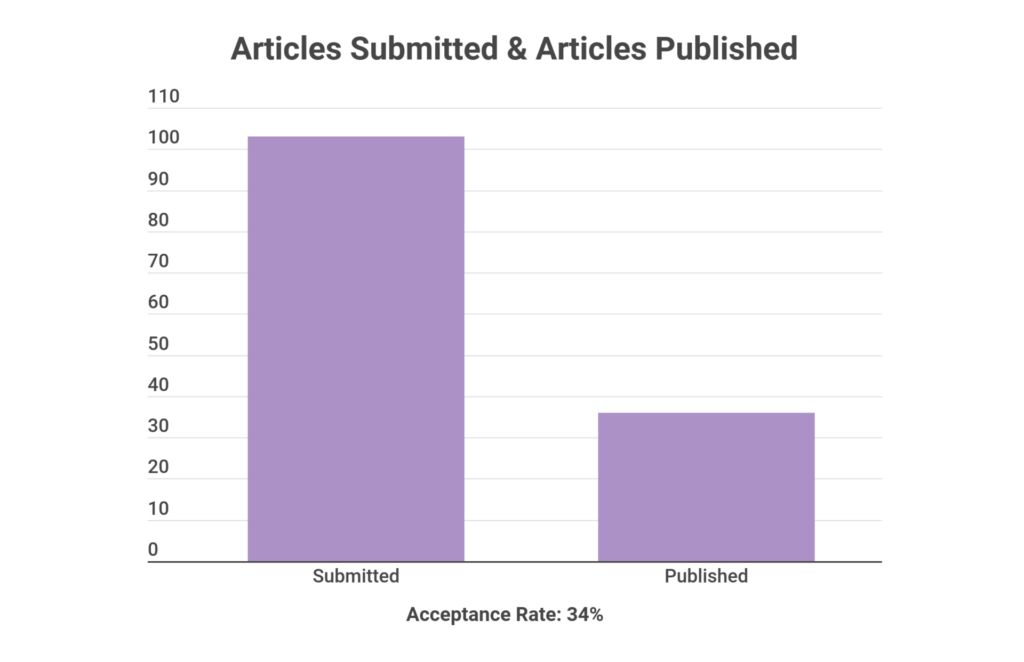
Publication times
The HKS Misinformation Review is on a mission to eliminate the barriers to the dissemination of cutting edge practical research on mis- and disinformation worldwide. A major aspect of this mission is reducing article publication times. We’re proud to offer one of the fastest submission-to-publication times for an Open Access (OA) social science journal while maintaining the highest standards of rigorous peer review. In today’s ever-changing information landscape, fast publication is vital to providing a peer-reviewed foundation for new misinformation interventions and correction techniques.
In 2021, initial editorial decisions were highly prioritized and made within 4 days on average. Editorial decisions after peer review were made within three weeks on average, while the average time from submission to publication was 98 days (see Table 1).
We wish to remind authors that manuscripts that are correctly formatted, well presented, and complete will be processed much more quickly than those requiring considerable copy-editing, and submissions deviating significantly from these guidelines are not considered by the editorial team.
| Average during 2021 | |
| Submission to first editorial decision | 4 days |
| Submission to final editorial decision | 75 days |
| Submission to publication | 98 days |
Publication frequency
In order to share valuable research insights with the public as quickly as possible, the HKS Misinformation Review publishes articles on a rolling basis instead of fixed times of the year. Published articles are then consolidated into bi-monthly issues, which can be accessed on our journal website. In 2021, we published an average of 3 articles per month. Our busiest month was April, during which we published 8 articles (Figure 2).
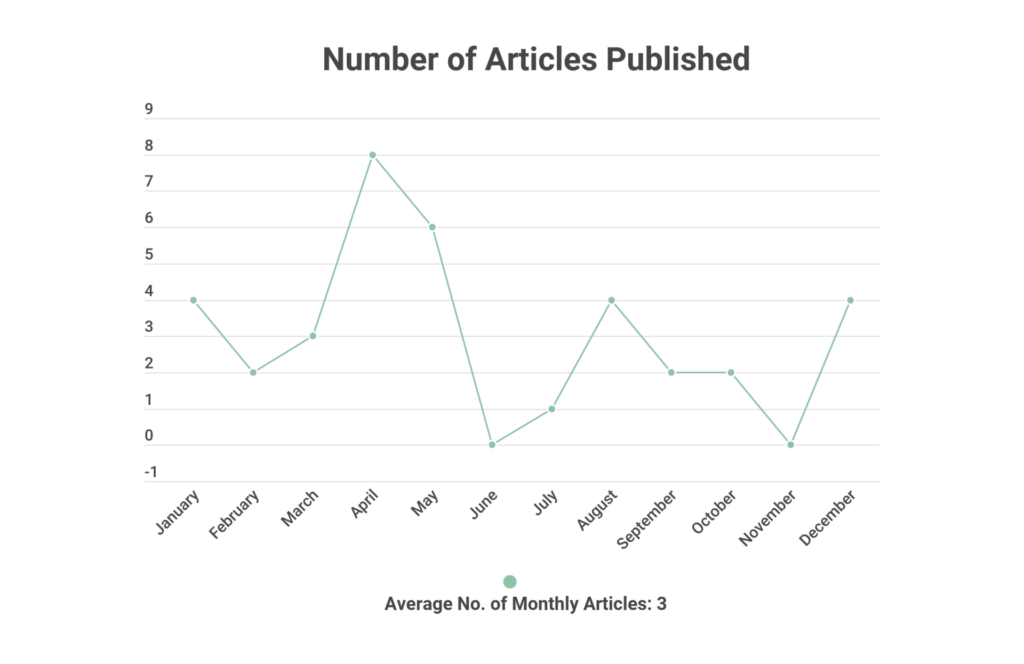
Article types
In 2021, we published three types of papers: research articles, research notes, and evidence-based commentaries. You can see the distribution of manuscripts by type in Table 2.
| Number | Percent | |
| Research Article | 24 | 61.5% |
| Research Note | 8 | 20.5% |
| Commentary | 4 | 10.2% |
| Other | 3 | 7.7% |
Figure 3 offers a comparison between 2020 and 2021 in terms of the types of articles published and their distribution.
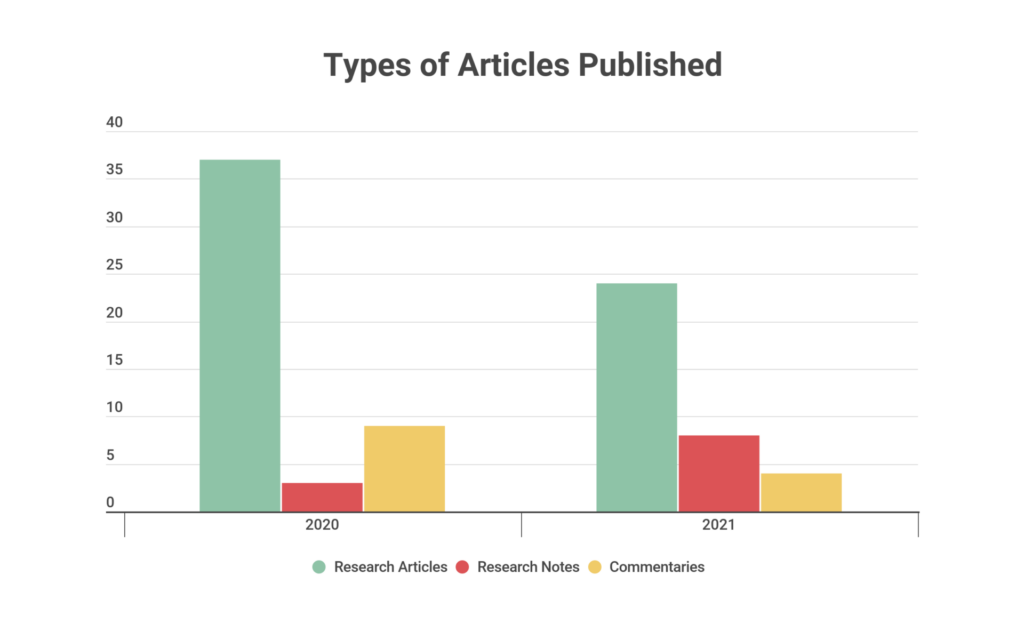
Author demographics
The HKS Misinformation Review is a community of authors, readers, and reviewers. Without authors, there would be no journal. As Editor-in-Chief, I have sought to create a journal that welcomes papers from across the world, and over the past 2 years, we have received papers from authors representing more than 25 countries, from Nigeria to Singapore.
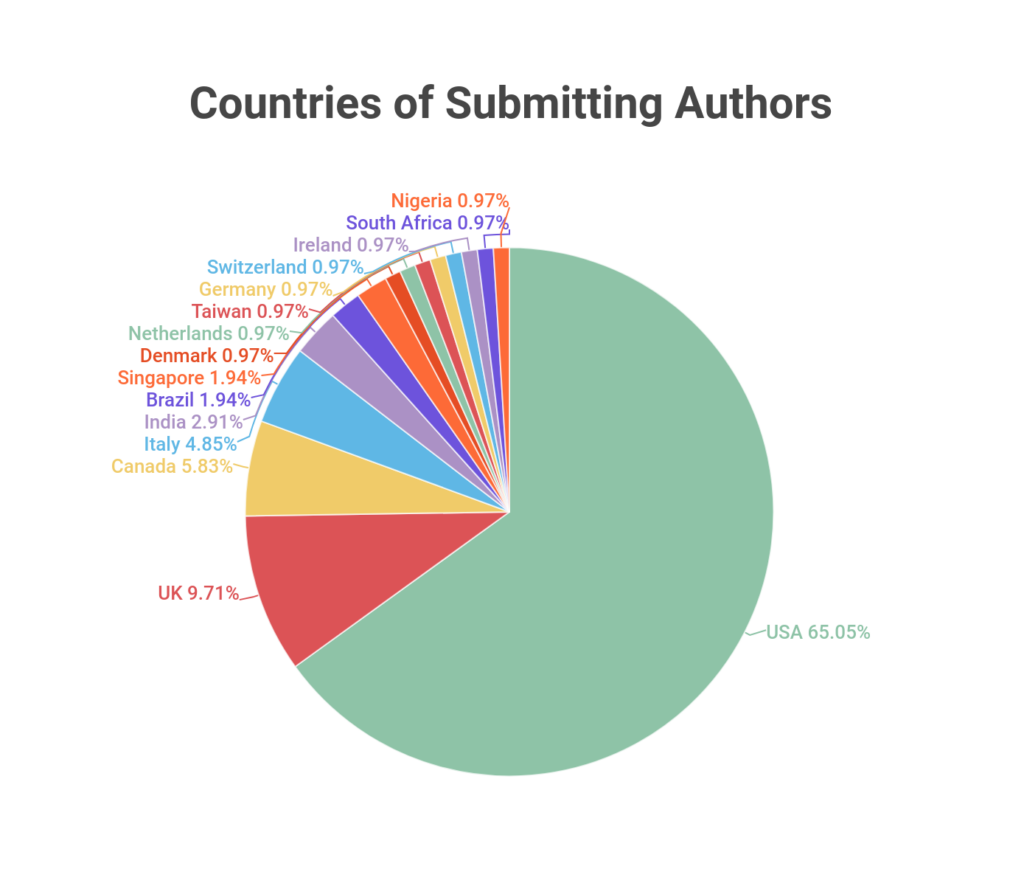
Although the most submissions in 2021 (and 2020) were received from corresponding authors based at US institutions (see Figure 4), the top 15 countries of origin of corresponding authors represent all continents but Antarctica and Australia.
Figure 5 shows the distribution of our published authors by country. Note that these numbers represent all authors we published in 2021, not just the corresponding and/or submitting ones. For reference, the total number of authors published last year was 141, of which 112 were based in the United States.
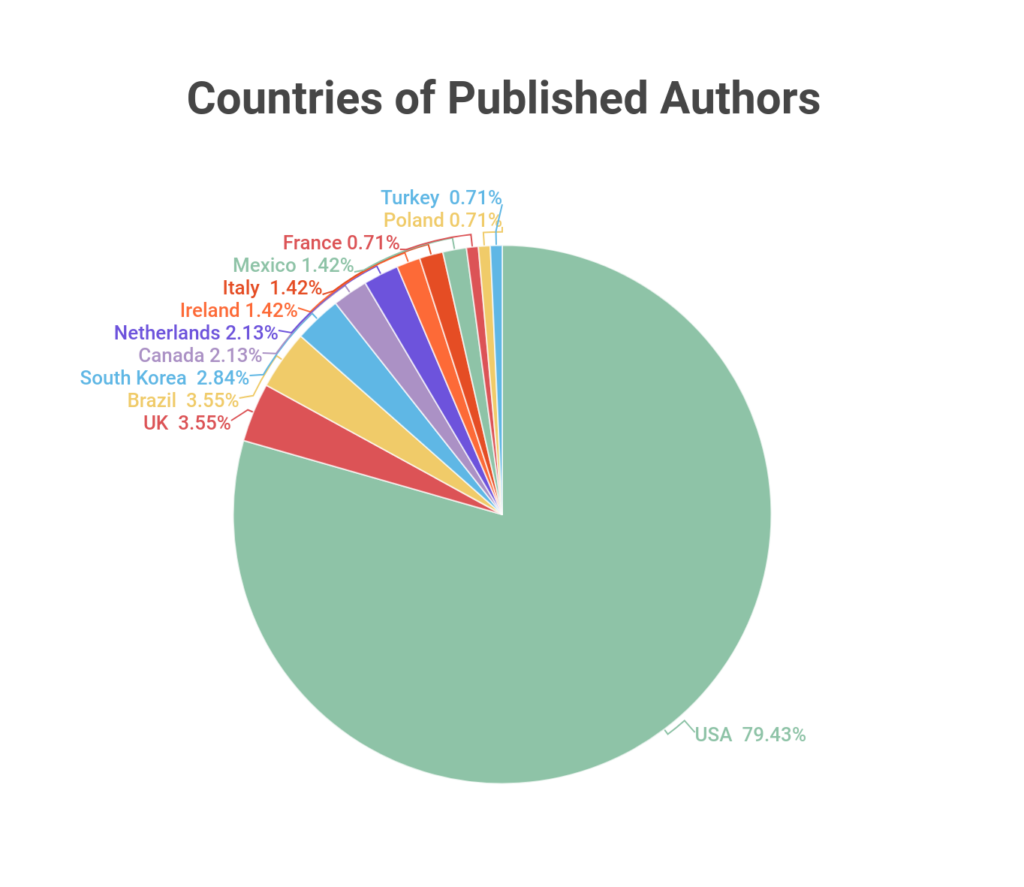
Most viewed articles
Our top 5 most viewed articles in 2021 were:
- Lies and presidential debates: How political misinformation spread across media streams during the 2020 election, by Jaren Haber, Lisa Singh, Ceren Budak, Josh Pasek, Meena Balan, Ryan Callahan, Rob Churchill, Brandon Herren, and Kornraphop Kawintiranon (19,812 unique pageviews)
- Retracted: Disinformation creep: ADOS and the strategic weaponization of breaking news, by Mutale Nkonde, Maria Y. Rodriguez, Leonard Cortana, Joan K. Mukogosi, Shakira King, Ray Serrato, Natalie Martinez, Mary Drummer, Ann Lewis, and Momin M. Malik (17,205 unique pageviews)
- Examining false beliefs about voter fraud in the wake of the 2020 Presidential Election, by Gordon Pennycook and David G. Rand (11,128 unique pageviews)
- Lateral reading: College students learn to critically evaluate internet sources in an online course , by Joel Breakstone, Mark Smith, Priscilla Connors, Teresa Ortega, Darby Kerr, and Sam Wineburg (4,689 unique pageviews)
- Right and left, partisanship predicts (asymmetric) vulnerability to misinformation, by Dimitar Nikolov, Alessandro Flammini, and Filippo Menczer(3,725 unique pageviews)
I also wish to acknowledge here our most-viewed-ever article, Bridgman et al.’s The causes and consequences of COVID-19 misperceptions: Understanding the role of news and social media, which was published on June 18, 2020, and which has amassed 87,582 unique pageviews so far. This is also one of our most cited articles so far, with 197 citations as of February 2022.
Readership & engagement
Our total number of website visitors in 2021 was 229,034 (up 12% from 2020). Our total number of pageviews was 400,490. Our daily website traffic was around 1,000 and daily pageviews were on average 1,097. Our audience skews younger, with 61% of website visitors under the age of 35 (Figure 6). We are proud to have a truly international readership, with more than half (53%) of website visitors coming from a country other than the US, and 50.5% of them coming from outside North America. Figure 7 shows the distribution of our readers by continent.
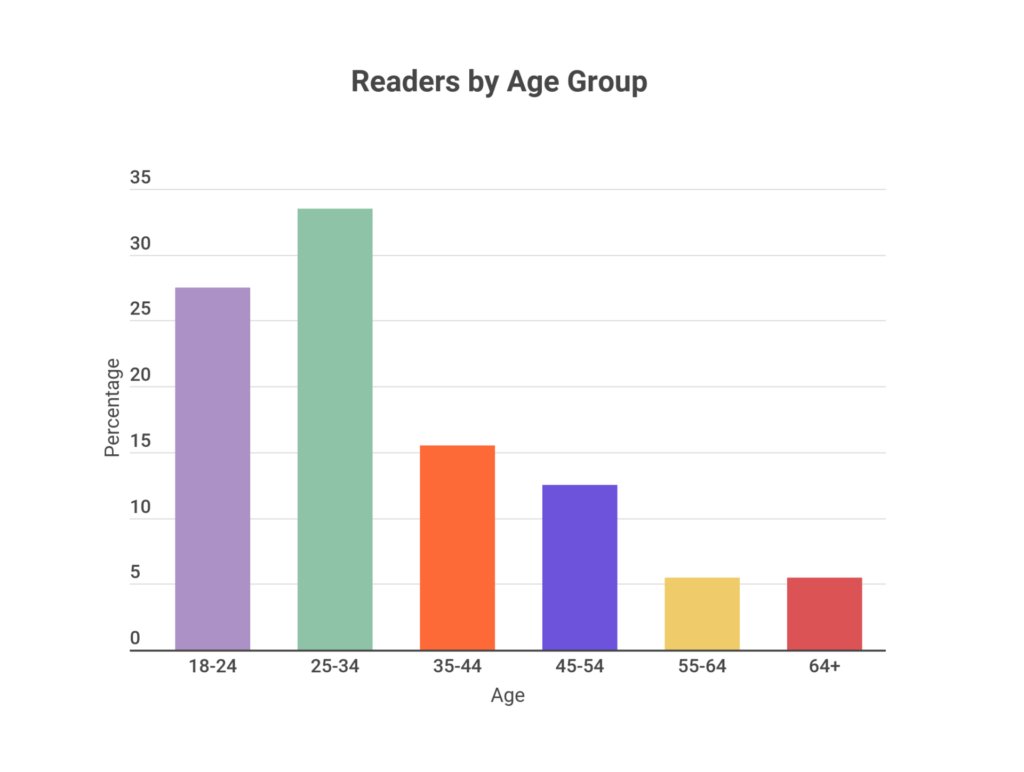
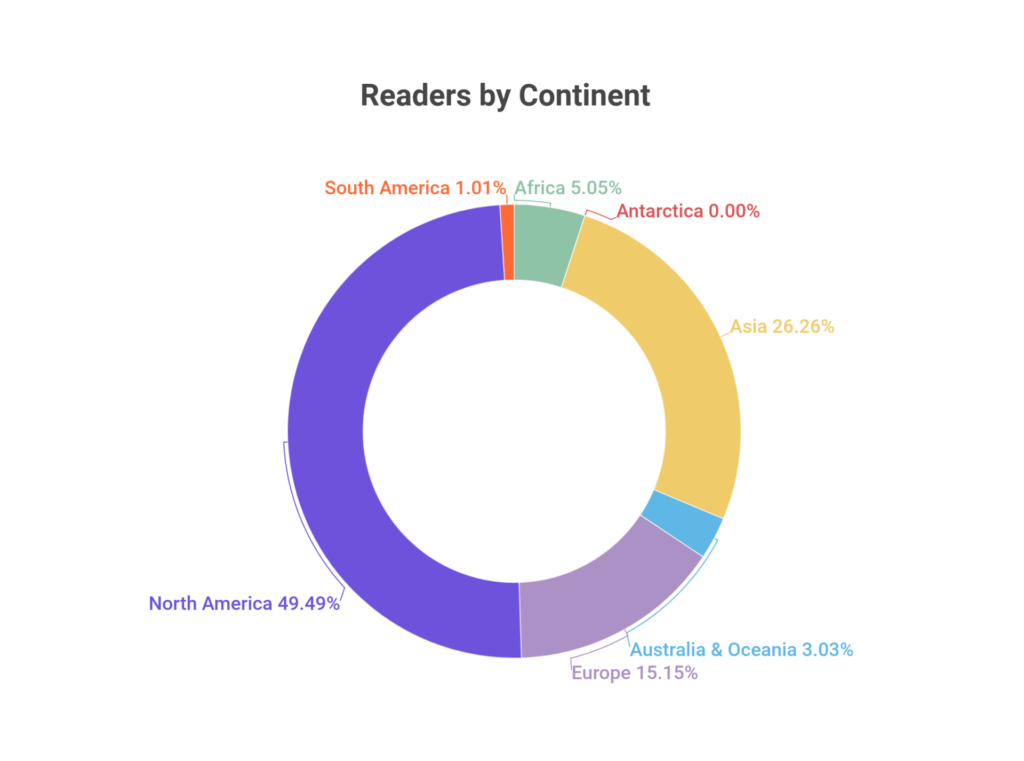
Copyright
This is an open access article distributed under the terms of the Creative Commons Attribution License, which permits unrestricted use, distribution, and reproduction in any medium, provided that the original author and source are properly credited.
Acknowledgements
This report was created with the help of Chloe Liu, Boston University.
